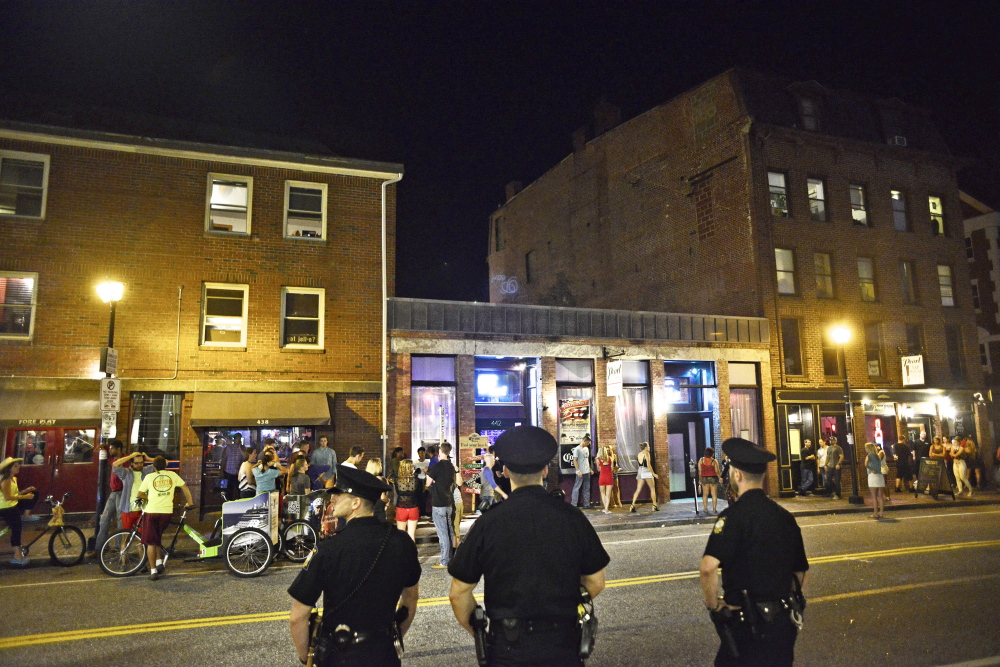The idea of using statistics to help prevent crime is a compelling one – and one that’s having a growing influence on law enforcement in Maine’s largest city.
Predictive policing calls for assigning officers based on data about what crimes are taking place at particular times and locations. Though the model doesn’t offer law enforcement a crystal ball, there’s solid evidence that predictive policing can help cut down on crime and improve the quality of life in the surrounding community.
An analysis of Portland Police Department data shows that in 2013, most aggravated assaults – those that caused a serious injury or involved a weapon – were recorded between 1 and 2 a.m. So to rein in altercations after the city’s bars close, the heaviest staffing is between 10 p.m. and 2 a.m., with teams of officers stationed at key corners. The visible presence is credited with helping contribute to a drop in assaults.
Analytic tools also have been used to address burglaries, thefts and robberies, crimes of opportunity that tend to peak in the summer, when both perpetrators and victims are outside and residents are less likely to secure their homes and cars. Departments that see waves of such offenses can take specific preventive steps, like helping owners of properties in high-risk areas improve security and working with citizen groups on neighborhood watch and reporting efforts.
Predictive policing was first put into practice in 2011 in Santa Cruz, California, where the number of burglaries fell by 19 percent in the first six months of the program. Since then, departments nationwide have embraced predictive policing – but it shouldn’t be adopted unquestioningly.
“Predictive policing is only as good as the data going into the system,” points out legal scholar Andrew Guthrie Ferguson. Because of the opportunity for human error in reporting, recording and data entry, there need to be mechanisms for external accountability, he said.
Ferguson also expects courts to be confronting Fourth Amendment issues: How will a tip based on predictive modeling affect the search-and-seizure protections of citizens in an area where criminal activity has been predicted?
That Portland is increasingly using data to forecast crime is a smart move, and one with promising implications for both public safety and police effectiveness and efficiency. As long as predictive policing is judiciously implemented, we all stand to benefit.
Send questions/comments to the editors.



Comments are no longer available on this story